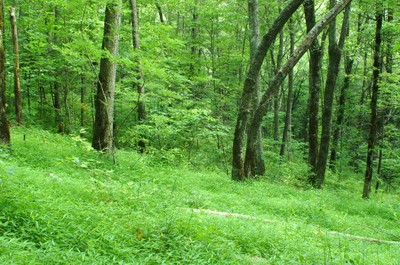Our changing views of the relationship between species invasions and species richness
Species diversity has long been seen as a major force helping ecosystems resist invasive species. In the past two decades, much progress has been made in diversity and biotic invasion research. As researchers continue to assess habitat invasions around the globe based on recent developments, it is time to test earlier theories and models, and to make important updates with new insights.
 Forest Service research, recently published in the journal Ecology and Evolution, demonstrates that our understanding of how native species diversity influences species invasions needs to be updated. Earlier theoretical studies have predicted that habitats with more native species tend to contain fewer non-native species. But at larger regional scales these studies have predicted that the relationship becomes positive—habitats with high native species richness tend to also support high exotic species richness. In the last two decades, extensive additional data have been accumulated, leading to new findings and insights. New studies confirm that the positive correlations between native and exotic richness over large scales are indeed common, and they have been attributed to factors such as land area (space) and resources that similarly control both native and exotic species. However, new studies also suggest that it is time to eliminate the frequently claimed “negative small-scale richness relationships” perception. This is partly due to the fact that, at local scales, native species richness may indeed enhance invasion resistance by reducing the invaders' abundance or distribution, but it rarely reaches the level required to expel exotic species.
Forest Service research, recently published in the journal Ecology and Evolution, demonstrates that our understanding of how native species diversity influences species invasions needs to be updated. Earlier theoretical studies have predicted that habitats with more native species tend to contain fewer non-native species. But at larger regional scales these studies have predicted that the relationship becomes positive—habitats with high native species richness tend to also support high exotic species richness. In the last two decades, extensive additional data have been accumulated, leading to new findings and insights. New studies confirm that the positive correlations between native and exotic richness over large scales are indeed common, and they have been attributed to factors such as land area (space) and resources that similarly control both native and exotic species. However, new studies also suggest that it is time to eliminate the frequently claimed “negative small-scale richness relationships” perception. This is partly due to the fact that, at local scales, native species richness may indeed enhance invasion resistance by reducing the invaders' abundance or distribution, but it rarely reaches the level required to expel exotic species.



